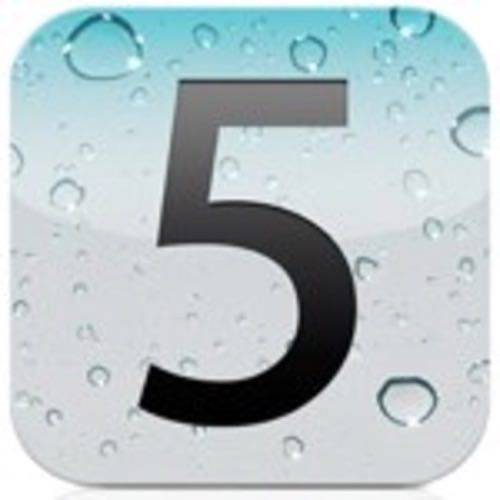Apple announced a slew of updates to its Mac OS, to its mobile iOS and to its relationship with the web in the form of a new product called iCloud today. A key over-arching trend across all the new technology announced is that it is intended to make everything you do with data and devices faster, easier and more friction-free.

Someday, quantum computing may change all of this; it’s a paradigm in which the spin of a single quantum bit in an atom is instantly reflected by a change in the spin of another quantum bit far away, making transfer of data an instant change of state. For now we have iCloud and it looks pretty good. But in the future we’ll not just move away from software install disks and USB syncing to Wifi and remote server farms (as Apple did today), we may instead get rid of the whole thing by entangling the bits on multiple devices and syncing those. That might sound crazy and it might be a long time in the future, but if we’re going to talk about the magic of wireless data transfer, let’s talk about its logical conclusion, shall we? There’s no better time, as iCloud was announced just a week after the first ever commercial sale of a quantum computer. Below is a summary of some of today’s key announcements and some thoughts about what they mean in the context of history.
Just as Google aims to make the web faster and easier to use, so that you’ll use it more often and it will make more money, so Apple is making mobile devices much easier to use, so you’ll use them more and it will make more money. A hardware and software maker had to make the kinds of moves that Apple did today to compete with the web-centric software-as-service competitor Google.
Update: Note that a few computer scientists have told me I am misrepresenting the nature of quantum computing. I’ll look into it further but wanted to note that perspective here.
Is that an ansible in your pocket?
Looking out further into the future, there may come a time when server farms feel as antiquated as Apple made software install disks and USB cords look today. The early days of quantum computing have already begun: last week the first commercially available Quantum Computer was sold to a non-government customer, D-Wave sold its $10 million giant box to Lockhead Martin. A giant box with a high price tag that possesses incredible new computing power? That sounds familiar, doesn’t it?
When your 1s and 0s are changed instantly to reflect the state of atoms they are tied to far away, we may be talking about an iDimension, not an iCloud.
Science fiction writers have for decades used as a literary device a kind of object called an ansible. An ansible is a device or material that allows nearly instantaneous communication across great distances, even across solar systems. “Anne McCaffery’s Crystal Singer series posited an instantaneous communication device powered by rare ‘Black Crystal’ from the planet Ballybran,” reads the Wikipedia entry on the topic, in just one of many examples. “Black Crystals cut from the same mineral deposit could be ‘tuned’ to sympathetically vibrate with each other instantly, even when separated by interstellar distances, allowing instantaneous telephone-like voice and data communication.”
For such a literary vision to become reality is probably still a long way out in the future, if it is ever possible. But basic quantum computers are on the market now, if primarily bought by governments for military purposes.
Your data will be flying around fast
Here’s what Apple announced today. Seamless transfer of photos from your phone to your iPad to you Mac. Automatic online backups and syncing between your mobile devices and your Mac every night while you are in bed. Over-the-air software updates that just deliver what’s changed, not whole new installs of the software you’ve already got.
It’s impossible to know what a Quantum iOS network would look like, but it would probably be more of what we saw today – only even faster, smoother and more lightweight. Would that represent such a quantitative change that fundamentally new qualitatively different software, services and experiences would become possible? Probably, yes.
These changes, along with the new PC Free option that lets you use iOS devices without a computer running iTunes, are all an example of what the company called “moving the digital hub from your device to the cloud.”
Apple is attempting to make the vision of the thin-client a reality, but with high-end devices instead of cheap commodity devices. Ultimately it’s all about the User Experience and Apple is trying to make each touch-point of this UX feel light, airy and fast – in addition to being easy, attractive and priced at a level the market will bear.
However, all these steps rely on giant server farms and are limited by the data transmission protocols and middlemen of the day. It’s impossible to know what a quantum iOS network would look like, but it would probably be more of what we saw today – only even faster, smoother and more lightweight. Would that represent such a quantitative change that fundamentally new, qualitatively different software, services and experiences would become possible? Probably, yes.
Lightening the load
Today’s Apple announcements included a lot of news about Twitter. Newly announced Twitter integration will allow you to share almost anything in any app as easily as you can email it today – and Twitter appears to be usable as a universal log-in now for apps on your devices. What’s more lightweight than Twitter?
Push notifications, perhaps. Apple announced today a new implementation of its push notifications that looks like a near-exact copy of how Android does it. And a new messaging service between iOS devices looks like it took a page out of Blackberry’s playbook.
The iCloud online storage and syncing tool will have an Application Programming Interface that will let 3rd party developers put that feature into any other app they build for iOS.
Imagine a quantum iDimension API. Imagine telling developers that if they so choose, they could build their apps to write data to a hardware API for quantum bits entangled with other remote bits. Would that not be the ultimate API?
The Apple cloud’s limitations
Three concerns come to mind about today’s newly announced features. First, it appears that most if not all iCloud features require a WiFi connection. It would be nice if that wasn’t the case, in order to keep using them when traveling away from reliable signals, for example. If backups were done in the same way that OTA software updates will now happen, with only that which has been changed being delivered, that seems more like something that could be done over 3G.
The new notifications and messaging features look great at first glance, but can they solve the problems of the systems they are replacing? That can’t be taken for granted. The notifications page for iOS looks a lot like the way that Android serves up notifications, but who says that’s the best way to do it? Time will tell but Apple is strongest in simplifying complex things – dealing with genuinely complex things like multiple messages from multiple sources is not something Apple seems generally good at.
The new iTunes in the Cloud service requires still that you’ve bought a song once, or that you’ve got a copy of it (somehow!) on your computer already. What sense does that make? Remember how funny it sounds to think about buying CDs anymore? Why does it sound any less funny to hear that buying digital copies to be stored locally is required?
Music (files) are just a form of data and data is growing easier and easier to shoot around all over the place. I haven’t bought copies of more than a handful of songs in years, but I pay $120 a year now to buy access to all the music I can listen to.
Streaming music services are the future of most music. Steve Jobs was right to chuckle about Google’s requirement that you spend days or hours uploading your music to the cloud, but what about his requirement that you have to have purchased a local digital copy of each song?
All of this is growing faster and easier than ever before. Apple and Google and Microsoft and Facebook will race to make it faster and easier to move our data around between devices. Mobile carriers will try to squeeze blood out of every penny they can find while that’s happening.
But in research labs around the world, scientists are working hard at harnessing the entanglement of quantum bits as a technology for computing and data transmission. If they succeed, this whole iCloud phenomenon will be just another chapter in the unfolding of the frictionless computing experience.









